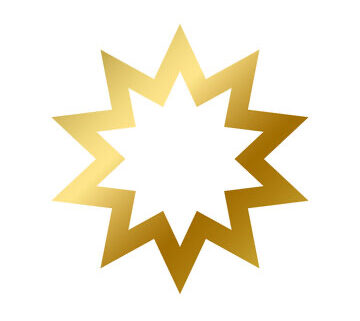The Bahá’í Calendar

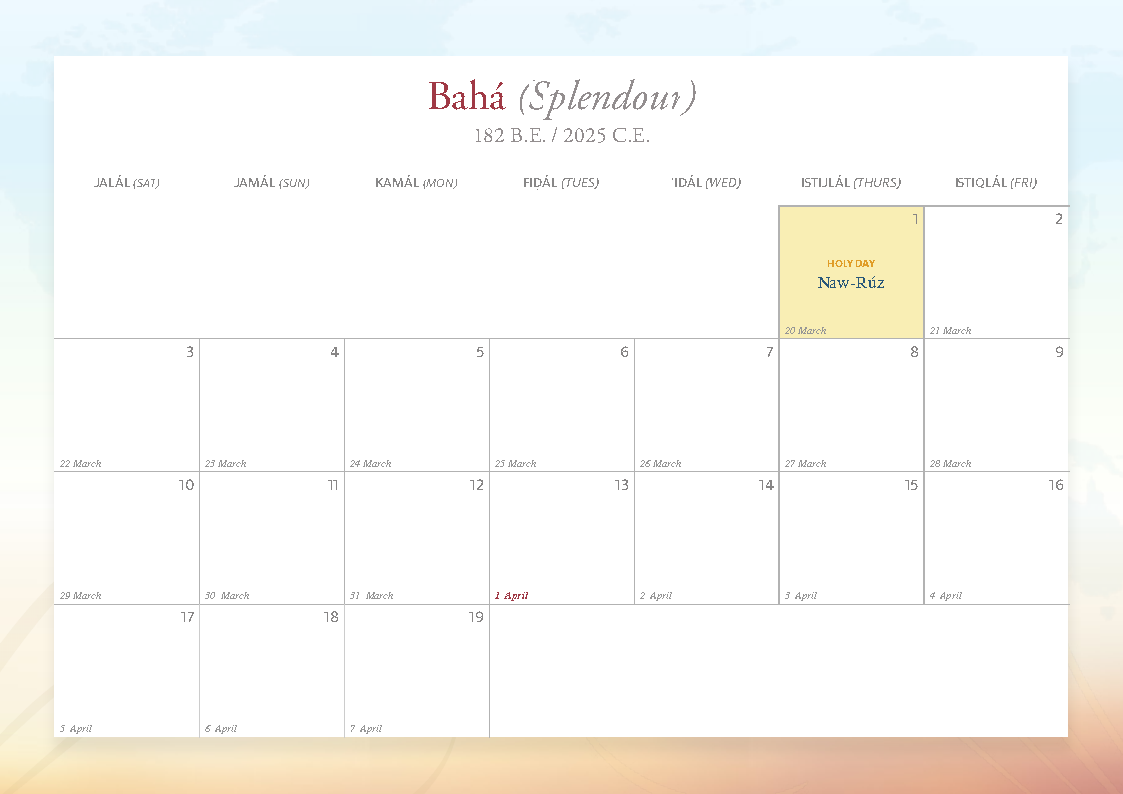
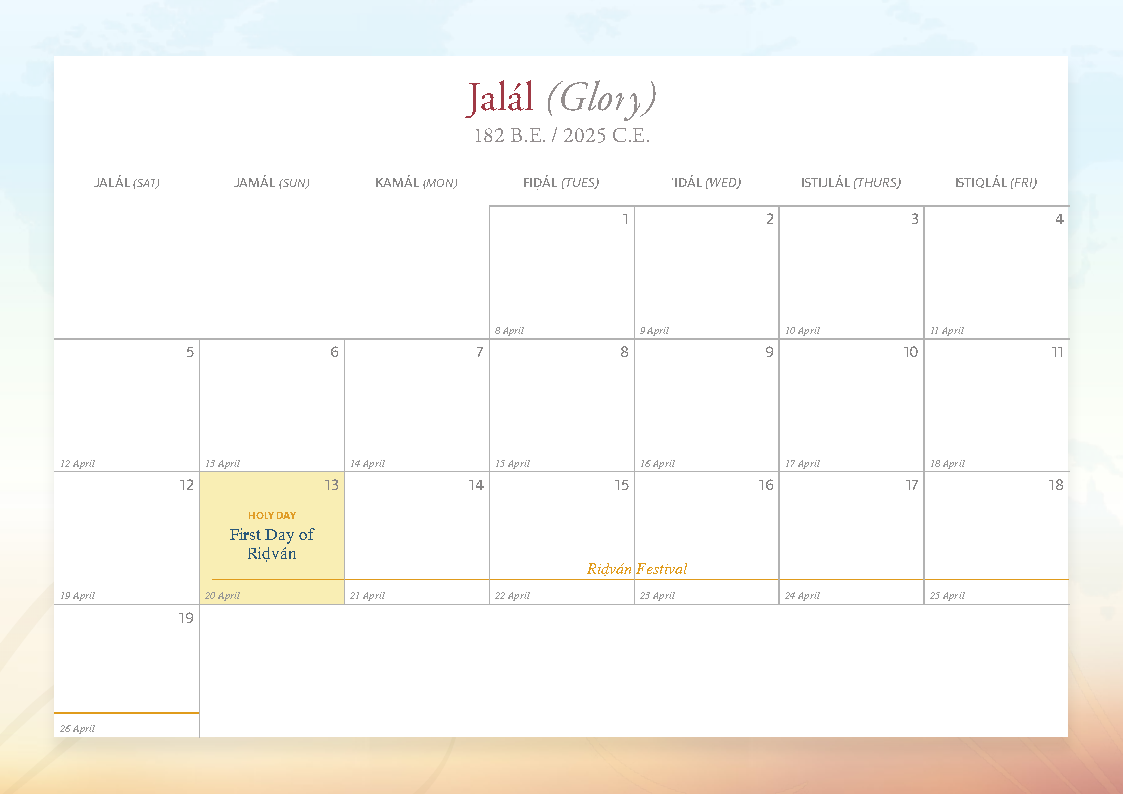
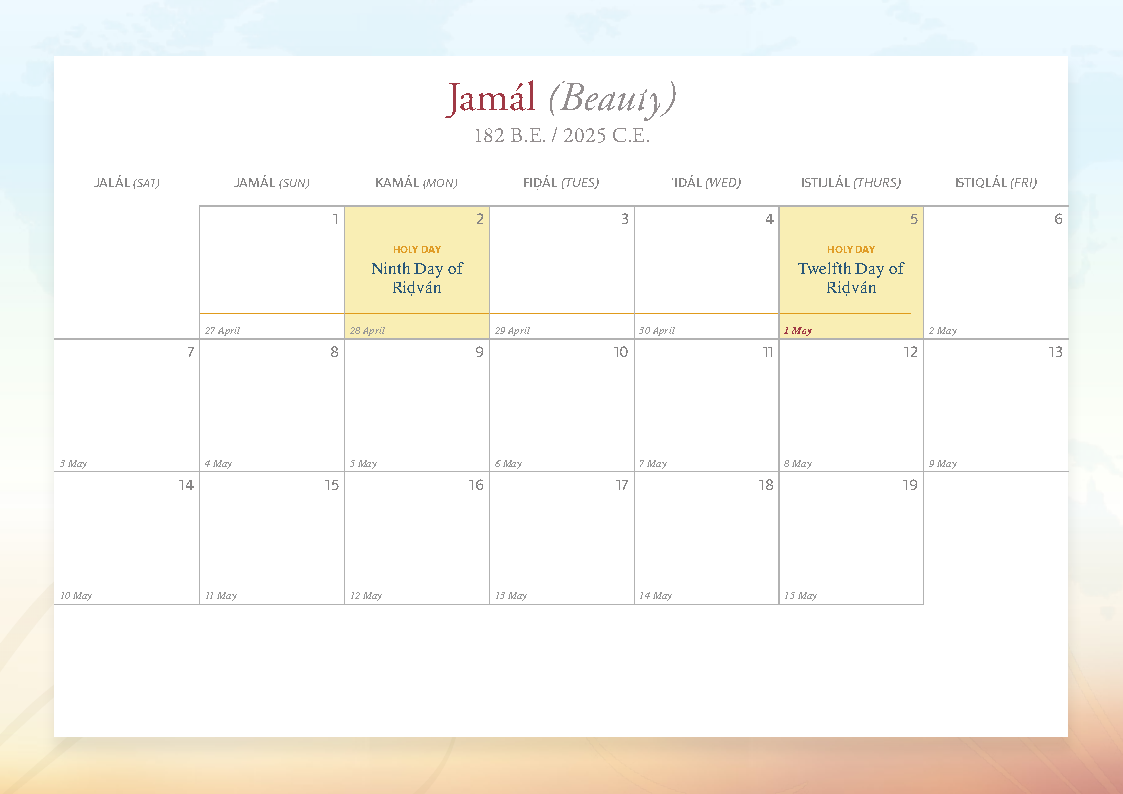
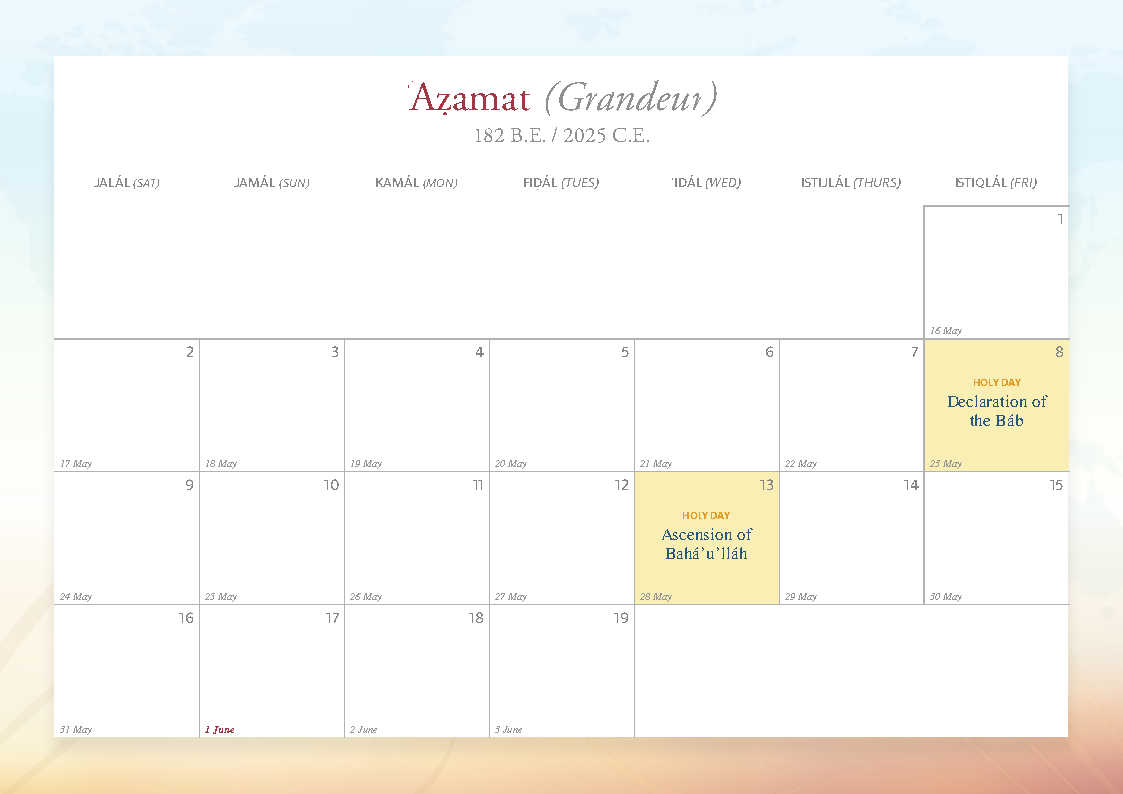
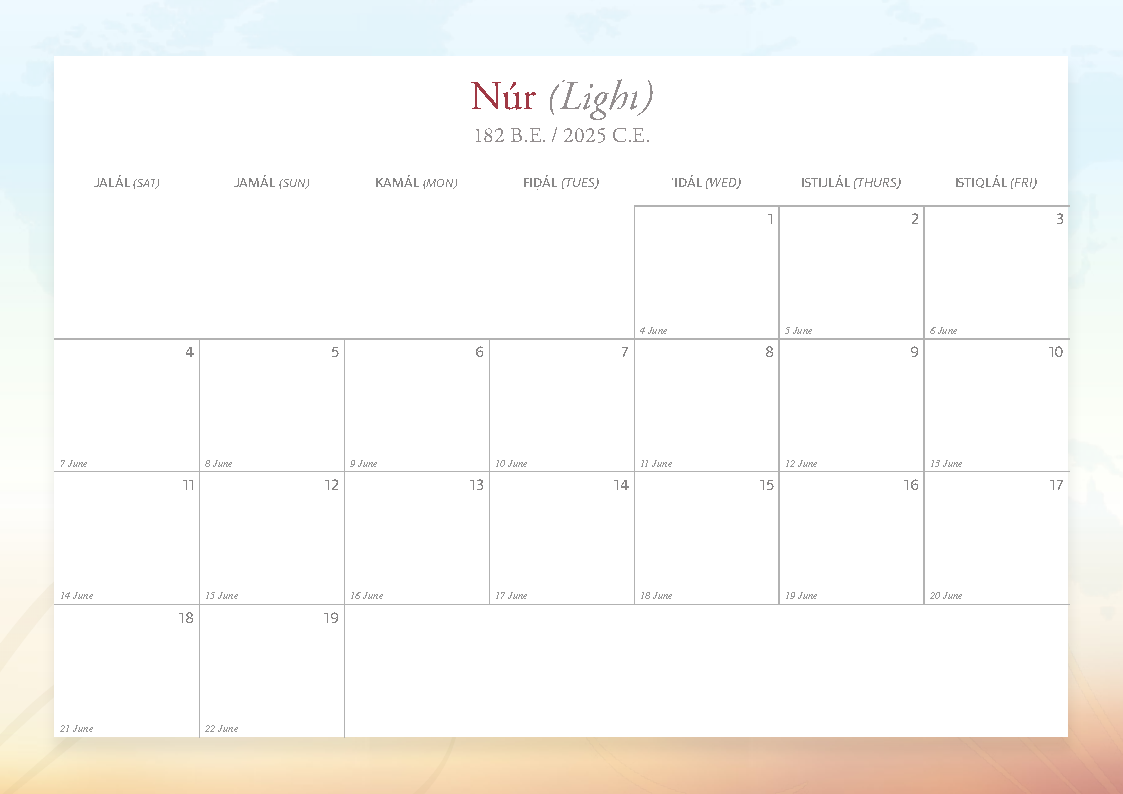
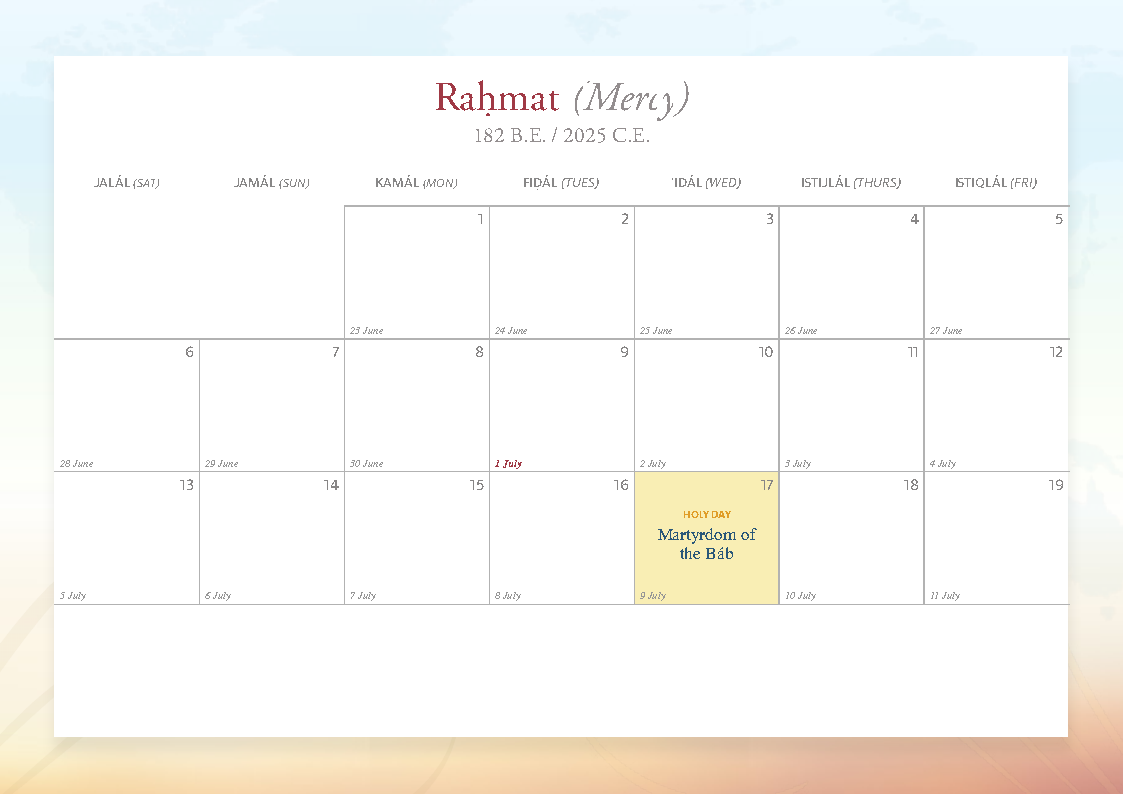
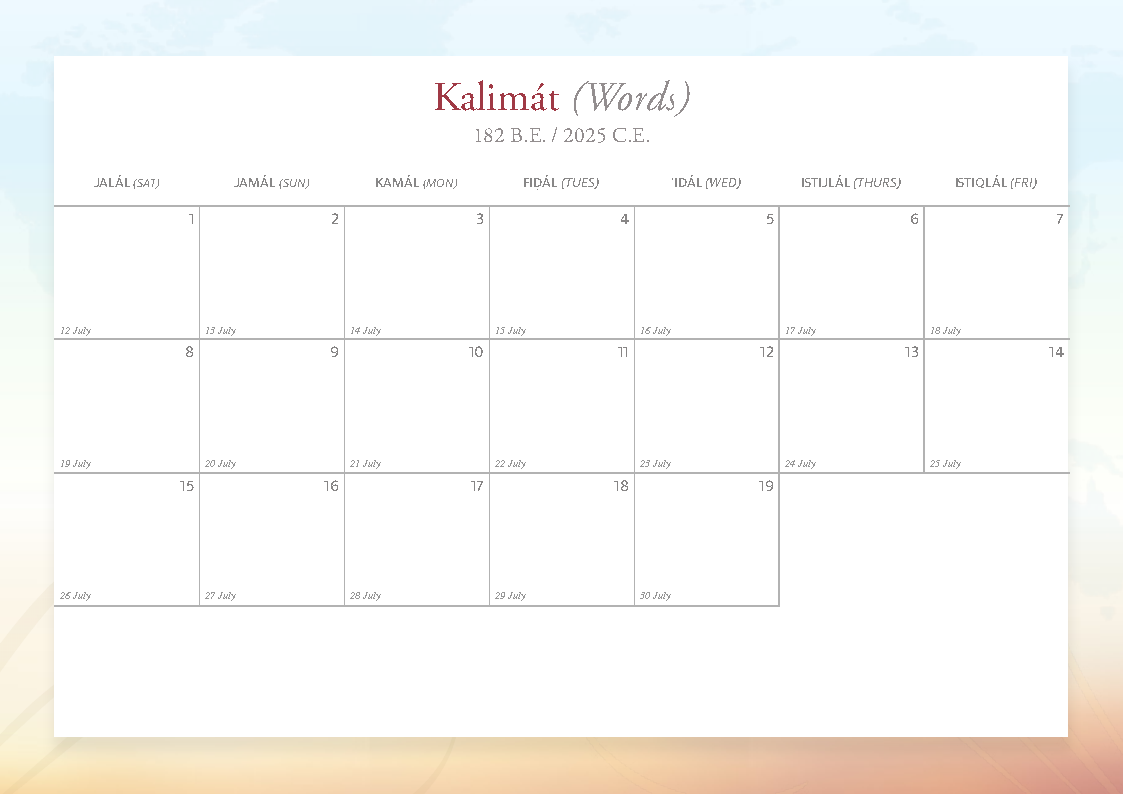
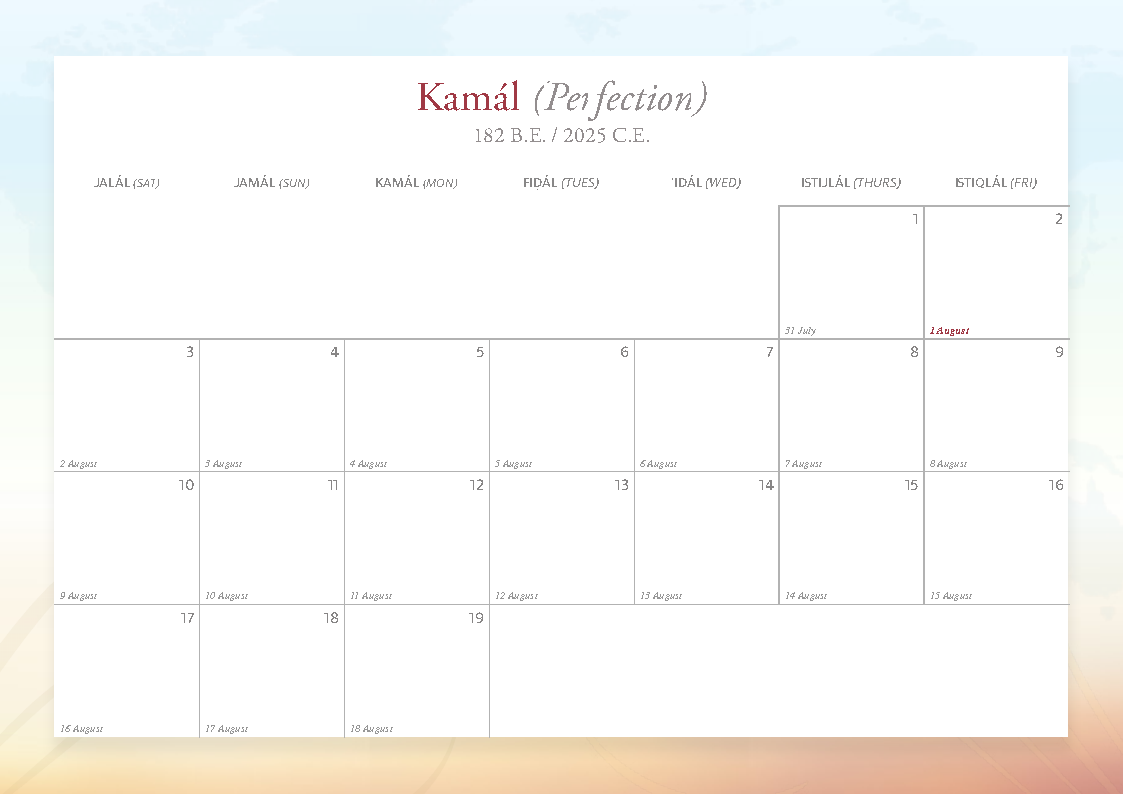
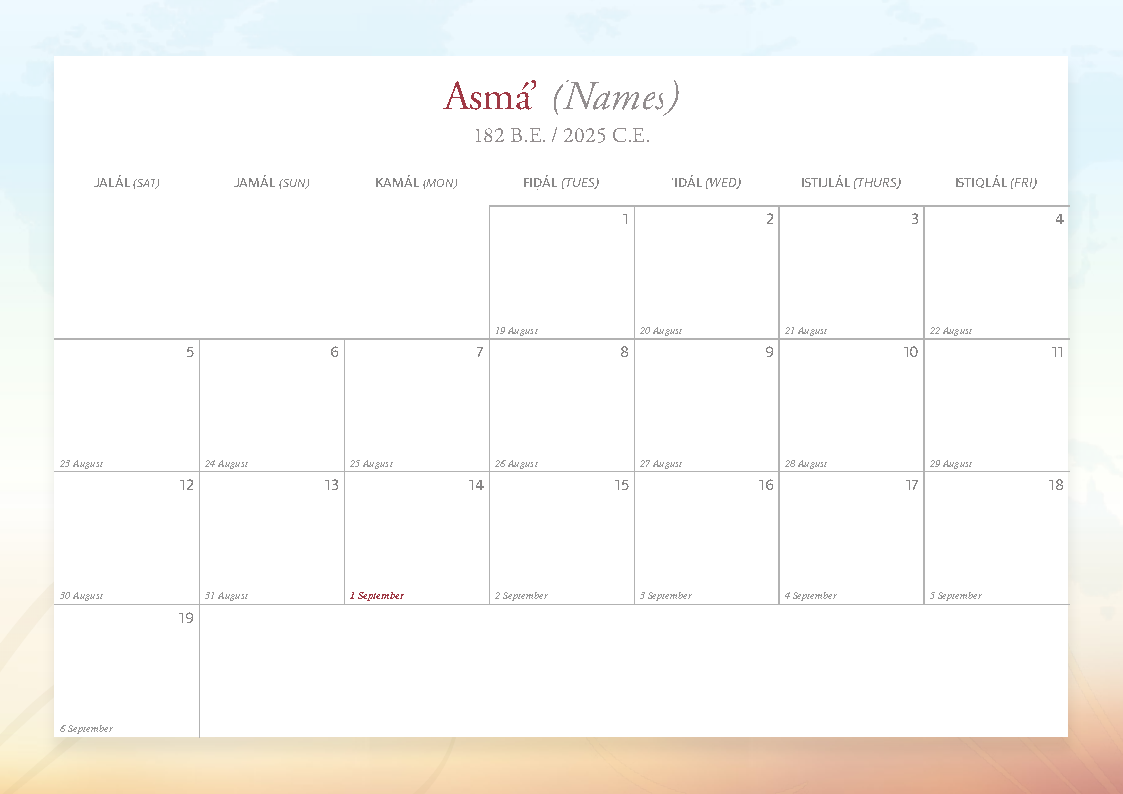

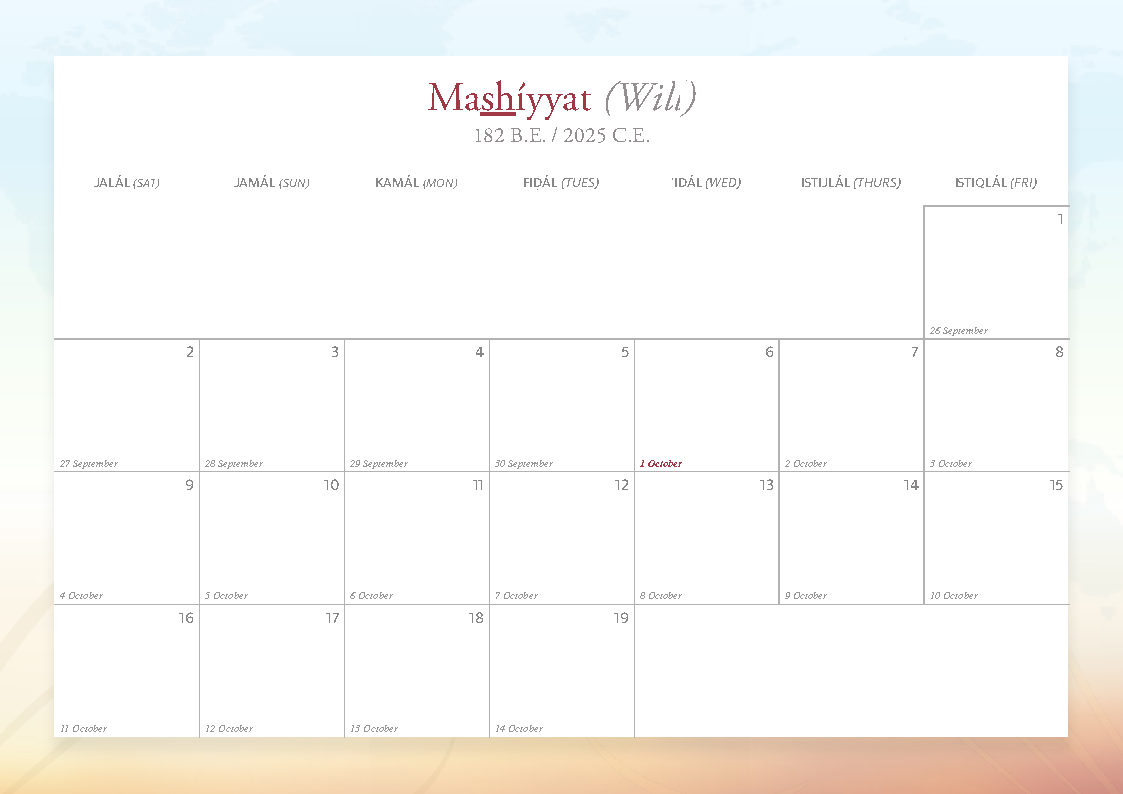



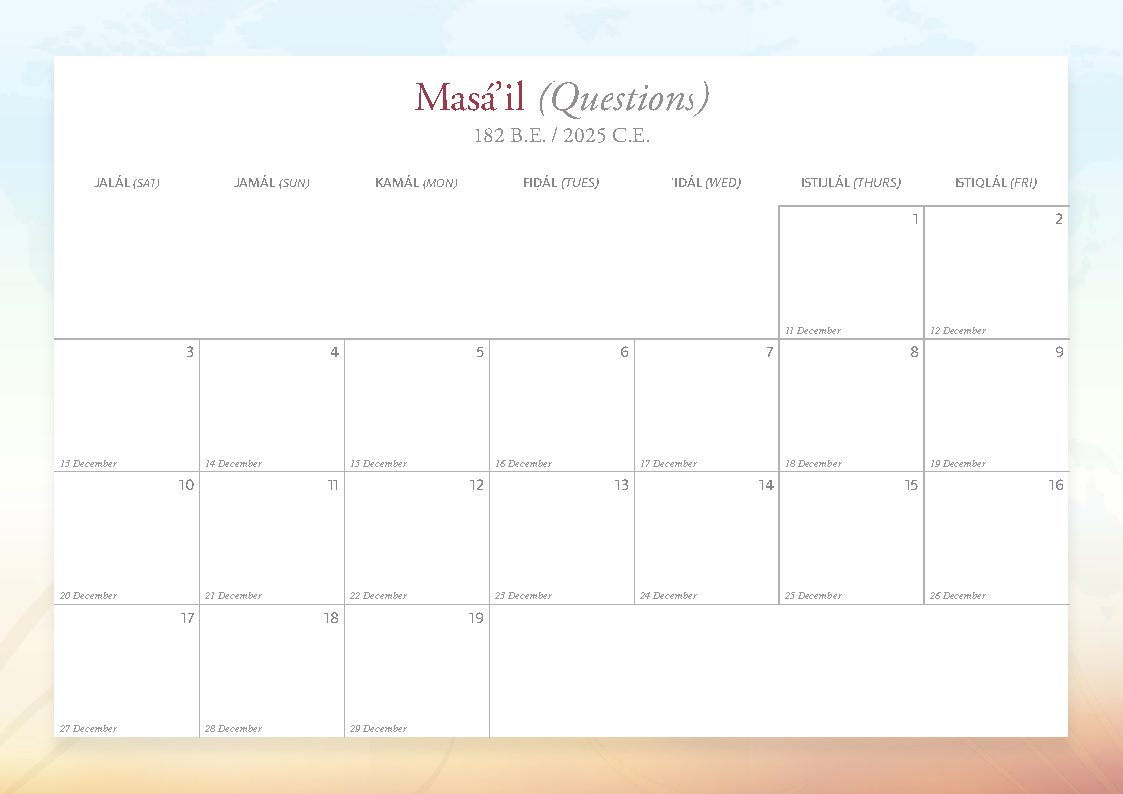

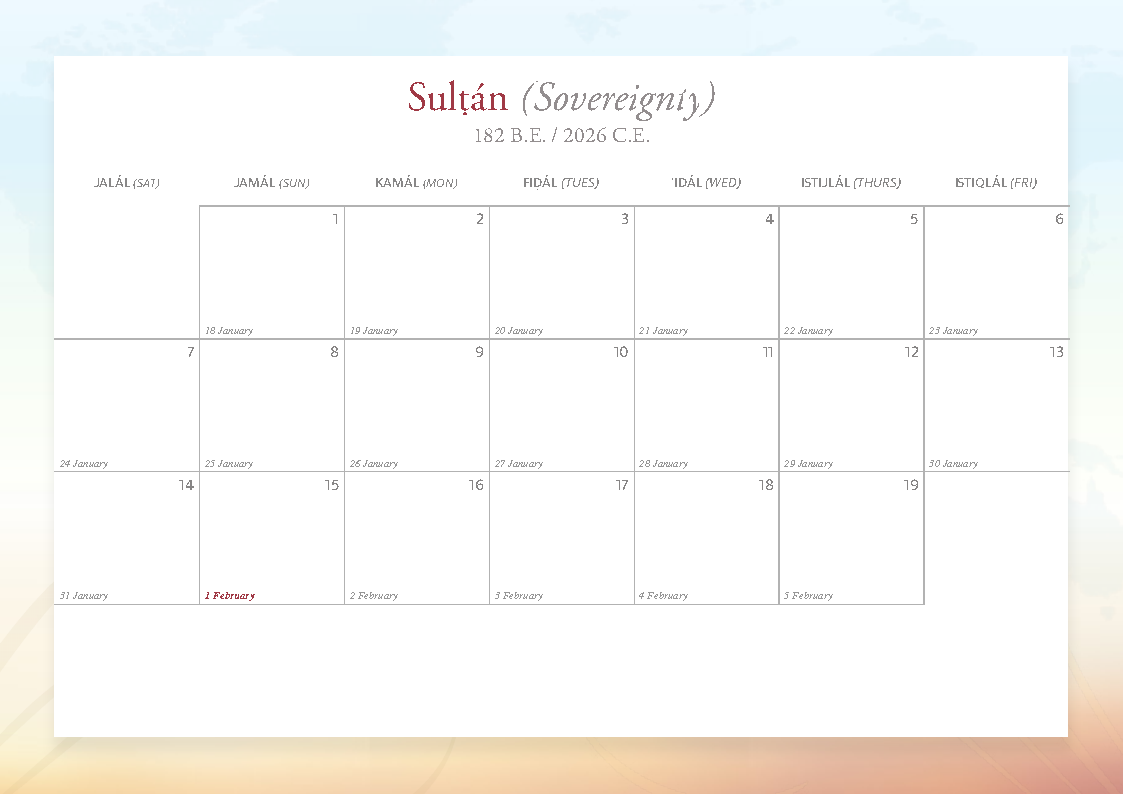

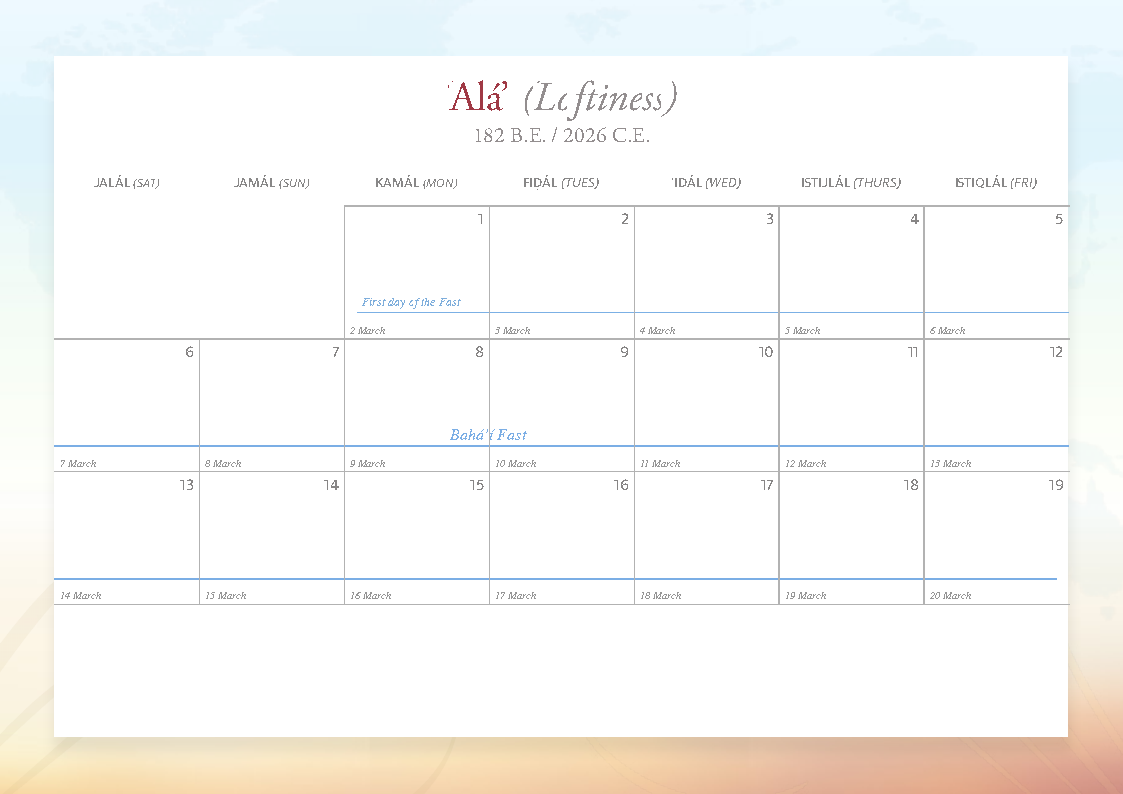
Bahá’í New Year (Naw-Rúz) and Holy Days
The Bahá’í calendar, known as the Badí‘ calendar, begins with Naw-Rúz, the Bahá’í New Year, celebrated on March 21st, coinciding with the spring equinox. Throughout the year, Bahá’ís in Zambia observe 11 Holy Days, including the Birth of Bahá’u’lláh, Birth of the Báb, Ridván Festival, and others. On these days, Bahá’ís gather for prayer, reflection, and celebration.
Nineteen-Day Months and Feast
The Bahá’í calendar is composed of 19 months, each with 19 days, totaling 361 days. Each month is named after a spiritual attribute (e.g., Splendor, Glory, Light). At the beginning of every Bahá’í month, believers gather for the Nineteen-Day Feast, a community gathering that includes spiritual devotion, administrative consultation, and social fellowship.
Local and National Events
In addition to Holy Days and Feasts, the Bahá’ís of Zambia organize various educational and community-building activities throughout the year. These include study circles, children’s classes, junior youth programs, and devotional gatherings. The calendar also includes important events like the National Convention for electing the National Spiritual Assembly, regional conferences, and special observances tied to the global Bahá’í community.
